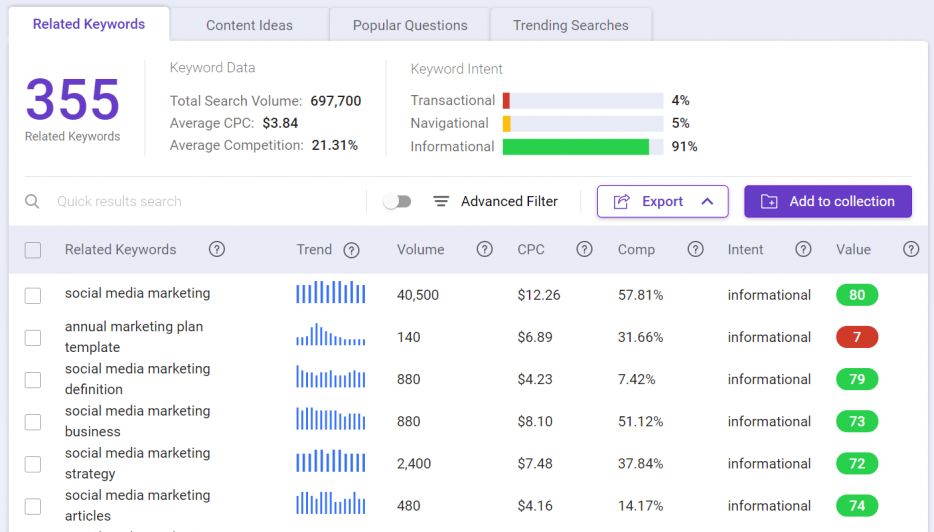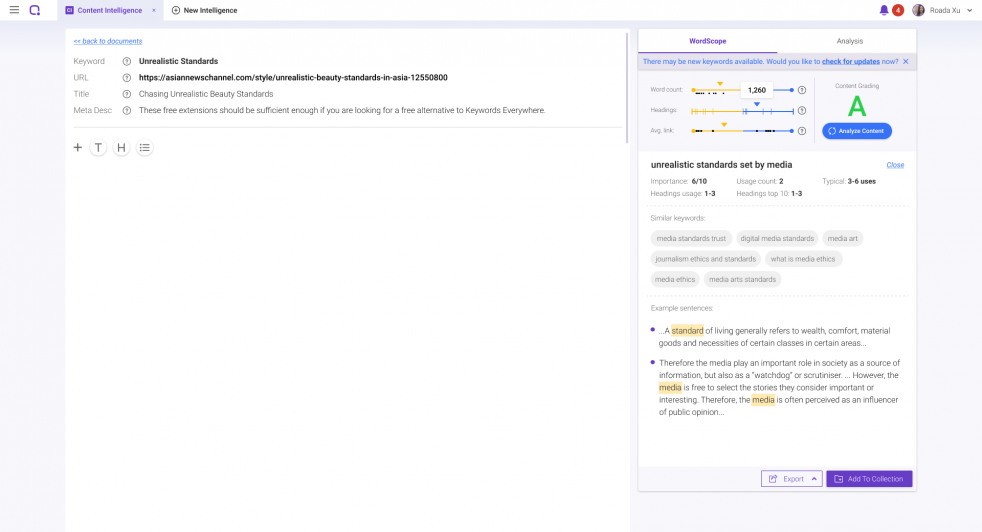There are many SEO strategies you need to consider when learning how to create a guide. This post breaks all of that down into 6 simple steps so you can create a guide that outranks your competitors!
Anyone who tries to uncover the world of SEO content writing knows just how many factors there are in making search-friendly content that’s click-worthy.

There are just too many strategies and SEO processes you must consider when learning how to create a guide.
From choosing the right keywords to writing engaging titles.
Let’s not forget that conducting audience research and learning how to use a how-to guide can be painstakingly long.
However, there are a few steps you can follow to make your content creation easier and more SEO-friendly.
You can easily create content that outranks even your top-performing competitors.
The desire to create better content has turned most SEOs into using this cringe-worthy trend.
They use the phrase “Ultimate Guide” in almost every post they publish.
You’ve probably fallen victim to this trend too.
But what does it really mean?
Is it really effective anymore?
I’ll show you how to create a guide in this post.
How To Write A Guide
Learning how to create content basically implies that you want to draft content that will wow your audience.
By that, you mean to create an “ultimate guide” that people will find highly informative, engaging, and interesting to read.
By using this phrase, you’re telling your audience that you’ve got the best content of all content, right?
No one else can top it.
It’s the blog post that ends all other blog posts.
However, the issue with so many blogs claiming to be the best in this ocean of content is that drafting unique content for your audience won’t be easy.
But it won’t be impossible either.
Simply claiming that your blog post is the best doesn’t necessarily make it so.


The purpose of every SEO content is always to attract more organic traffic and generate clicks.
But the magic of creating top-tier content for your audience isn’t in the title or even your article length.
It’s in the value of your post.
What value will your audience get from reading your post?
That’s the bottom line.
Here’s an excellent guide on how to create a guide the right way.
You will attract more traffic and readers who will rave about your blog post for days.
1. Understand Your Target Audience

Unfortunately, many newbie bloggers and sometimes SEO experts fail miserably at this point when creating a guide.
You may have the skillset or content to craft the best blog post ever.
And that is super-amazing!
Good for you.
However, even the best, most perfectly crafted content won’t mean much if it doesn’t reach the right target audience.
Or worse, it doesn’t receive any audience or viewership.
Yes, simply crafting and publishing content doesn’t always mean it will be seen.
It’s not always easy to know what your audience is thinking or what they’re looking for from your content.
But what if you just asked them what they really wanted to read?
Not many SEOs think to do this.
It’s as simple as asking your readers something like, “what’s your take on [Topic]?”
It’s the best way you’ll know what your target audience expects to find from your content and give your blog post even more value.
Make it a casual survey where your audience doesn’t feel like they’re being interrogated.
Any answers you get should help you determine the best information to include in your next guides and posts.
Here are other questions you could ask your audience to receive honest feedback:
- What other solutions have you tried to solve [Topic]?
- What would you tell other brands to include in their [Topic]?
- Assuming you had three questions about [Topic]. What would they be?
- What do you consider your top struggle when dealing with [topics/problems]?
You would be surprised by how many responses you’ll receive from asking such targeted questions.
In SEO content creation, making guesses almost never works.
Plus, what’s the need for guessing your readers’ needs when you can simply get your answers directly from the source?
2. Gather Relevant Information

Assuming you now know what your audience wants to read from your guide and have some interesting headlines on hand.
You’ll have to choose the best headline you believe will appeal the most to your audience.
You must also remember to pick a headline with loads of information and other relevant content.
You don’t want to end up with a killer headline but not enough research content to go around.
Once you’ve decided on the headline you want to write about, create an outline for your guide.
The outline must contain the content introduction, body, and conclusion.
If you don’t like the outline or don’t think it resonates well with your content, adjust it until you feel more confident about using it.
The whole purpose of this stage is to be so picky with what you like and use in your guide and match it with relevant information for your post.
3. Perform Keyword Research

So, you’ve successfully finished your content research.
This next step is perhaps even more important.
Keywords are what your target audience will use to search for your content in the search engines.
Therefore, you want to get this part right.
Not every keyword you use will be suited for your guide.
Fortunately, you’ll find several SEO keyword research tools you can use to find the right keywords when creating a guide.
BiQ Cloud offers one such tool.
BiQ Keyword Intelligence is one of the best tools you can use to search for related keywords for your focus keyword.
The Keyword Intelligence tool will analyze the web to find all related keywords your target audience is interested in.

BiQ will also provide you with other critical insights such as how many users are searching for your target and related keywords, the searchers’ intent, etc.
With this data, you can use related keywords based on value as the higher valued keywords will likely bring more traffic at a lower competition.
BiQ Keyword Intelligence will also help you to identify your keyword intent.
Someone may search for your keyword on the search engine but not really be looking for the content you’re offering.
With the Keyword Intelligence tool, you’ll know what is the searcher’s intent.
This way, you’ll get to understand your audience better and provide them with exactly what they’re searching for.
Related keywords also prevent you from overstuffing your target keywords.
It’s vital that you choose keywords that will do the rest of your guide justice.
Look for keywords that warrant a comprehensive content piece.
A masterpiece that the search engines and users will favor.
4. Write Your Guide

If you’ve been following blog posts from big authoritative websites and top SEO experts, you’ll probably notice that they like going big.
This means:
- Creating long-form guides
- Including stats
- Adding several visuals
- Cover the guide with facts and details other bloggers may not touch on
You should always strive to provide your target audience with as much value as possible.
Cover everything there is to cover about your guide.
Make your readers feel they don’t need to seek more content elsewhere.
Now, you’ll probably not have the time, energy, or skillset to create five-plus guides like this with every post.
That’s why most SEO experts prefer scaling back their content and focusing on drafting lesser.
But their content is optimized and high quality for their audiences.
After all, it’s much better than churning out dozens of mediocre guides.
BiQ Content Intelligence is another excellent tool that allows you to know which topics to cover.
Assuming you’ve already found a great keyword for your guide.
The next step is to determine what goes inside the guide.
A typical practice most bloggers do is type in the keyword in Google search then open multiple tabs that rank for that keyword.
However, the problem with this is that it takes too long.

BiQ Content Intelligence will analyze any keywords for your content against the top-performing organic content in the search engines.
Better still, this SEO tool gives you a breakdown of your target keyword based on usage, similar keywords, and example sentences.
The SEO Suite also provides you with an accurate readability score of your content.
This enables you to achieve semantic content excellent for even higher rankings.
You’ll have critical data that allows you to refine your content strategies for the more sophisticated search engines we have today.
5. Add Relevant Images

If you hire a freelancer to craft your guide and he/she includes images, ensure they are screenshots, royalty-free images, or images that were purchased.
In other words, you don’t want to end up getting sued for using another company’s copyrighted images.
This isn’t something new.
Bloggers get stuck in situations where they used images they weren’t supposed to and published such content.
They would later receive a legal letter from stock photography websites such as Getty Images.
You would be forced to take down the said images and be fined for their prior use.
This can cost your brand thousands of dollars if you’re not keen on the images your content writers use on your guides.
Therefore, it’s important to be very picky about the images your writers can and cannot use in your guides.
Then again, you also want to encourage using several images in your content to add a visual appeal to your posts.
Brilliantly placed images will draw more website traffic and increase your dwell time on the page.
6. Promote Your Guide
Finally, you’ve researched, written, and published your ultimate guide.

Even the most well-articulated guide isn’t any good if nobody gets to read it.
And not just anyone.
Every blogger always aims to have their content read by the right audience.
Considering the time and energy you spent crafting your content, you owe it to yourself to promote it well.
Therefore, ensure that you spend time hitting up people within your industry before you release your guide.
You’ll want to let all the relevant parties know about your guide well before it hits the internet space.
This is important since you can also entice these people to promote your guide as well on their social media accounts.
You can do so by:
- Share the guide all over your social networks. Some of the best social platforms to get the word out quickly include Facebook, Twitter, and Google+. You’ll also want to share it in your personal and business accounts
- Share the guide in all groups on all your social networks. Groups are particularly great since they harbor people with similar interests, making them the perfect channel to share your guide. LinkedIn and Facebook have some of the most active groups in the social networking space. Capitalize on them
- Email your list. You probably already have a mailing list with readers who engage with your content regularly. Don’t forget them. You’ll want to share your latest and greatest pieces with them
Although it might sound simple, spreading the word out about your blog works very well.
News about your guide will spread like wildfire if you put it in front of the right audience.
And if you don’t know which strategy to use to approach your audience or group, try out something like this:

Of course, you can expect many people to ignore your request to share your new guide.
However, the few that do will promote your guide on their social media accounts where more people will find it, read it, and promote it.
It will bring about a ripple effect that’ll get your content all over social media.
Conclusion
Generally, anyone can create a guide and publish content on their web pages.
However, if you wish to attract more organic traffic, improve your brand recognition, and generate more backlinks, then this is the post for you.
And the best part is that you don’t have to spend a lot of time or resources to create a guide.
Most SEOs write their guides internally or use in-house designers to make their guides amazing.
Now, I’ll leave you with this.
Happy writing!




